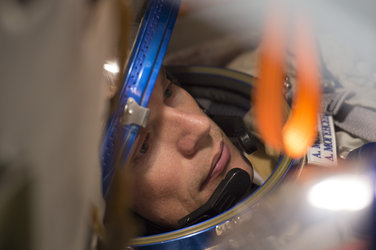Accept all cookies Accept only essential cookies See our Cookie Notice

About ESA
The European Space Agency (ESA) is Europe’s gateway to space. Its mission is to shape the development of Europe’s space capability and ensure that investment in space continues to deliver benefits to the citizens of Europe and the world.
Highlights
ESA - United space in Europe
This is ESA ESA facts Member States & Cooperating States Funding Director General Top management For Member State Delegations European vision European Space Policy ESA & EU Space Councils Responsibility & Sustainability Annual Report Calendar of meetings Corporate newsEstablishments & sites
ESA Headquarters ESA ESTEC ESA ESOC ESA ESRIN ESA EAC ESA ESAC Europe's Spaceport ESA ESEC ESA ECSAT Brussels Office Washington OfficeWorking with ESA
Business with ESA ESA Commercialisation Gateway Law at ESA Careers Cyber resilience at ESA IT at ESA Newsroom Partnerships Merchandising Licence Education Open Space Innovation Platform Integrity and Reporting Administrative Tribunal Health and SafetyMore about ESA
History ESA Historical Archives Exhibitions Publications Art & Culture ESA Merchandise Kids Diversity ESA Brand Centre ESA ChampionsLatest
Space in Member States
Find out more about space activities in our 23 Member States, and understand how ESA works together with their national agencies, institutions and organisations.
Science & Exploration
Exploring our Solar System and unlocking the secrets of the Universe
Go to topicAstronauts
Missions
Juice Euclid Webb Solar Orbiter BepiColombo Gaia ExoMars Cheops Exoplanet missions More missionsActivities
International Space Station Orion service module Gateway Concordia Caves & Pangaea BenefitsLatest
Space Safety
Protecting life and infrastructure on Earth and in orbit
Go to topicAsteroids
Asteroids and Planetary Defence Asteroid danger explained Flyeye telescope: asteroid detection Hera mission: asteroid deflection Near-Earth Object Coordination CentreSpace junk
About space debris Space debris by the numbers Space Environment Report In space refuelling, refurbishing and removingSafety from space
Clean Space ecodesign Zero Debris Technologies Space for Earth Supporting Sustainable DevelopmentLatest
Applications
Using space to benefit citizens and meet future challenges on Earth
Go to topicObserving the Earth
Observing the Earth Future EO Copernicus Meteorology Space for our climate Satellite missionsCommercialisation
ESA Commercialisation Gateway Open Space Innovation Platform Business Incubation ESA Space SolutionsLatest
Enabling & Support
Making space accessible and developing the technologies for the future
Go to topicBuilding missions
Space Engineering and Technology Test centre Laboratories Concurrent Design Facility Preparing for the future Shaping the Future Discovery and Preparation Advanced Concepts TeamSpace transportation
Space Transportation Ariane Vega Space Rider Future space transportation Boost! Europe's Spaceport Launches from Europe's Spaceport from 2012Latest

Soyuz revisited
Thank you for liking
You have already liked this page, you can only like it once!
The last time ESA astronaut Andreas Mogensen saw a Soyuz, he and his fellow crewmembers were making their fiery reentry to Earth in the reliable spacecraft, landing in the Kazakh steppe in the early hours of the morning on 12 September 2015.
Today, nearly three years later Andreas reunites with the Soyuz TMA-18M capsule that launched him to space at the Danish Museum of Science and Technology in Copenhagen.
Andreas became Denmark’s first astronaut when he embarked on the intense 10-day ‘iriss’ mission to the International Space Station in 2015.
The Danish Museum of Science and Technology has acquired the Soyuz capsule and is unveiling it as part of the new exhibition ‘To Space and Back’ opening today.
Andreas spent 10 busy days in space testing new technologies and conducting scientific experiments for ESA. It was during ‘iriss’ that Andreas tested the time-saving hardware called mobiPV or Mobile Procedure Viewer.
One of the highlights during Andreas’ mission were the images of thunderstorms from space. He managed to record many kilometre-wide blue flashes around 18 km altitude, including a pulsating blue jet reaching 40 km. A video recorded by Andreas as he flew over the Bay of Bengal at 28 800 km/h on the Station shows the electrical phenomena clearly – a first of its kind.
The photographs and video were evidence of the scientific importance of studying hard-to-observe thunderstorms and other electrical activity in the upper atmosphere from space. It also confirmed the Space Station as a great vantage point 400 km above the clouds.
Now, the Atmosphere-Space Interactions Monitor or ASIM is picking up where Andreas left off. Launched in April this year, ASIM is a collection of optical cameras, light meters and an X- and gamma-ray detector that will measure and document electrical activity in the upper atmosphere.
Science and technology aside, you never forget your ride in a Soyuz, and Andreas is happy to be reunited with it. “It is the first time after my return from the International Space Station that I am able to see the capsule again, something that I have been looking forward to,” said Andreas.
The capsule was unveiled in a ceremony including Danish Prince Joakim and other dignitaries and is on display for all visitors. “A museum like this is what inspires our children and younger generations to pursue a career in science and technology,” Andreas said.
That’s worth the fiery ride alone.
Andreas will be back in Denmark for the opening of the Moon exhibition at the Louisiana Museum of Modern Art in September.
-
CREDIT
ESA -
LICENCE
ESA Standard Licence

Andreas at the National Museum of Denmark

Andreas during a simulation inside the full-scale mo…

Andreas during a simulation inside the full-scale mo…

Andreas and Gennady during training















 Germany
Germany
 Austria
Austria
 Belgium
Belgium
 Denmark
Denmark
 Spain
Spain
 Estonia
Estonia
 Finland
Finland
 France
France
 Greece
Greece
 Hungary
Hungary
 Ireland
Ireland
 Italy
Italy
 Luxembourg
Luxembourg
 Norway
Norway
 The Netherlands
The Netherlands
 Poland
Poland
 Portugal
Portugal
 Czechia
Czechia
 Romania
Romania
 United Kingdom
United Kingdom
 Slovenia
Slovenia
 Sweden
Sweden
 Switzerland
Switzerland
























